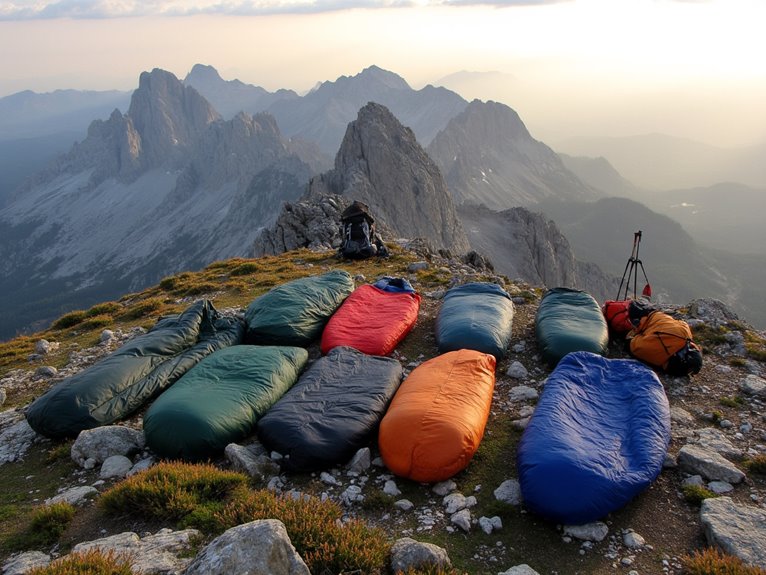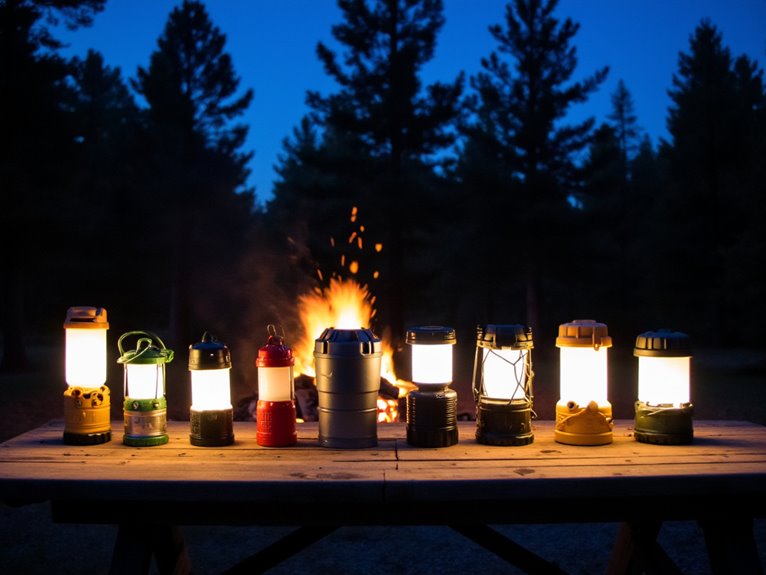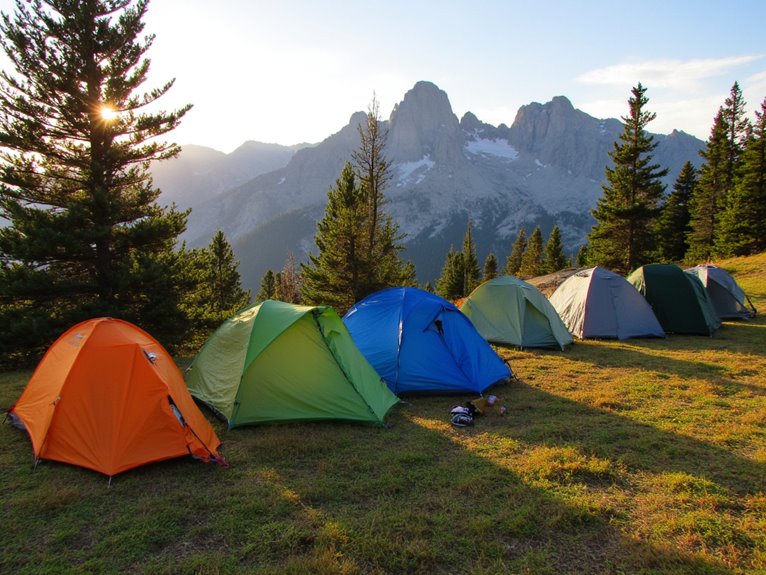How Many Litres for Bikepacking?
When planning a bikepacking trip, it's essential to determine the ideal amount of water to carry. Climate, terrain, and individual factors such as body weight and activity level substantially impact hydration needs. In general, a minimum of 1-2 liters of water per person per day is recommended for mountainous terrain, with adjustments needed for desert rides or rolling hills. To calculate your ideal liter count, consider factors such as sweat rate, riding style, and water source availability along the route. By considering these factors, you can guarantee you're carrying sufficient fluids for a safe and enjoyable ride, and there's more to discover about optimizing your hydration strategy.
We are supported by our audience. When you purchase through links on our site, we may earn an affiliate commission, at no extra cost for you. Learn more. Last update on 6th January 2026 / Images from Amazon Product Advertising API.
Climate Considerations for Bikepackers
In regions with high temperatures and humidity, bikepackers can expect to lose up to 1.5 liters of water per hour through sweat, making it essential to plan hydration strategies according to the climate.
In arid environments, evaporation occurs rapidly, and riders must compensate for the increased fluid loss.
Conversely, in cooler climates, hydration needs may be lower, but it's still vital to drink regularly to maintain electrolyte balance.
Climate-specific hydration planning involves considering factors such as air temperature, humidity, wind, and sun exposure.
Terrain Type and Water Needs
When bikepacking, the terrain type profoundly influences water requirements.
Mountainous regions, characterized by steep inclines and rugged trails, necessitate increased hydration due to the physical demands of traversing challenging landscapes.
In contrast, desert rides and rolling hills have distinct water needs, emphasizing the importance of tailored hydration strategies for each unique terrain.
Mountainous Regions Demand More
Mountainous terrain, characterized by steep inclines and rocky trails, necessitates additional hydration due to the increased physical exertion required to traverse these challenging landscapes.
As bikepackers tackle mountainous regions, they must consider the added demands on their bodies. Climbing steep grades and tackling technical trails requires more energy, which in turn increases sweat rate and dehydration risk.
To mitigate this, bikepackers should plan to carry at least 1-2 liters of water per person for each day of riding in mountainous terrain.
Additionally, it's essential to prioritize electrolyte-rich snacks and drinks to replenish lost salts and maintain peak hydration levels.
Desert Rides Need Less
Bikepackers traversing desert landscapes can substantially reduce their water carrying needs, as the flat, arid terrain and generally smooth trails require less physical exertion compared to mountainous regions.
This translates to lower water loss through sweat, allowing riders to conserve their supplies.
A general rule of thumb is to carry 1-2 liters of water per person for a full day of riding in the desert.
However, this can vary depending on individual factors such as temperature, humidity, and personal hydration needs.
It's essential to monitor your body's signs of dehydration and adjust your water intake accordingly.
Rolling Hills Require Moderate
As riders shift from arid desert landscapes to rolling hills, they can expect to encounter moderate terrain that demands a corresponding increase in water intake, with a general guideline of 2-3 liters per person for a full day of riding.
This moderate terrain requires more effort, and hydration is vital to maintain performance and avoid dehydration.
Rolling hills often feature shorter, steeper climbs, which can quickly deplete energy stores.
The varied terrain may include gravel, dirt, and paved roads, each with its own unique demands on the body.
Proper hydration is essential to maintain electrolyte balance, prevent cramping, and support overall physical performance, which is vital to prevent exhaustion and maintain stamina.
Personal Hydration Requirements Matter
When it comes to bikepacking, understanding personal hydration requirements is crucial for a safe and enjoyable ride.
Factors such as body weight, climate, and activity level all play a significant role in determining individual hydration needs.
Body Weight Matters
An individual's body weight plays a significant role in determining their personal hydration requirements, with a general rule of thumb being that a person needs to drink at least 30-40 milliliters of water per kilogram of body weight per day.
This means that a 70-kilogram individual would require approximately 2.1-2.8 liters of water daily.
For a more accurate calculation, consider your activity level and climate (to be discussed later).
Adjust your hydration plan based on your body weight to avoid dehydration or overhydration.
Climate Affects Hydration
Humidity, temperature, and altitude substantially influence an individual's hydration requirements, making it essential to adjust water intake according to the climate of the bikepacking route.
In hot and humid environments, the body loses more water through sweating, requiring increased hydration to prevent dehydration.
Conversely, in cooler climates, hydration needs may be lower.
Altitude also plays a significant role, as high elevations can cause dehydration due to increased respiratory water loss.
Bikepackers must consider these factors when planning their hydration strategy, taking into account the specific climate conditions they will encounter.
Activity Level Impacts
As bikepackers engage in varying levels of physical exertion, their individual hydration requirements fluctuate substantially, underscoring the importance of tailoring water intake to their specific activity level.
A bikepacker's activity level has a profound impact on their hydration needs, making it essential to adjust water consumption accordingly.
- Light activity (casual riding on flat terrain): 0.5-1 liter/hour
- Moderate activity (riding on varied terrain with some elevation changes): 1-1.5 liters/hour
- High-intensity activity (aggressive riding, steep inclines, or extreme weather): 1.5-2 liters/hour
Bikepacking Trip Duration Factors
The duration of a bikepacking trip is greatly influenced by factors such as the number of riding days, daily mileage, and rest days, which must be carefully considered to guarantee adequate hydration and nutrition.
A longer trip demands more supplies, while shorter trips allow for more flexibility in packing.
Daily mileage also affects hydration needs, as increased mileage requires more water intake.
Rest days, on the other hand, provide an opportunity to replenish supplies and recover.
Accurate planning of these factors guarantees that riders can maintain peak hydration and energy levels throughout the trip.
Water Source Availability Along Route
Water source availability along the route plays a critical role in determining the amount of water to carry, as riders must balance the weight and bulk of water against the uncertainty of finding reliable refueling points.
Knowing the location and reliability of water sources along the route is essential to avoid dehydration and unnecessary weight.
Research local water sources, such as rivers, streams, and water stations.
Identify areas with limited water availability, such as deserts or remote areas.
Plan to carry additional water or water treatment options, such as filters or purification tablets, in areas with uncertain water availability.
Packing Light Vs Staying Hydrated
By striking a balance between packing light and staying hydrated, bikepackers can optimize their load while ensuring they have sufficient water to sustain them throughout their journey.
This delicate balance is vital, as carrying excessive water weight can hinder performance, while inadequate hydration can lead to fatigue and decreased performance.
A general rule of thumb is to carry a minimum of 1-2 liters of water, depending on the climate, terrain, and individual needs.
Bikepackers can also consider using water-efficient gear, such as hydration bladders or water bottles with built-in filtration systems, to minimize weight while maintaining access to safe drinking water.
Riding Style and Water Consumption
Riders who adopt an aggressive pace or tackle demanding terrain tend to deplete their water reserves more rapidly, making it essential to adjust their hydration strategy accordingly.
This is because intense physical exertion increases sweat rate, leading to faster dehydration.
To mitigate this, bikepackers should prioritize hydration when tackling challenging routes or pushing their physical limits.
Terrain difficulty: Mountainous or hilly routes require more water due to increased physical exertion.
Pace and intensity: Faster-paced rides or those with frequent bursts of intensity necessitate more frequent hydration stops.
Climatic conditions: Extreme temperatures, high humidity, or wind can accelerate dehydration, requiring more water consumption.
Calculating Your Ideal Litre Count
To determine your ideal litre count, consider the interplay between your individual factors, such as body weight, riding style, and the terrain, to estimate your hourly fluid loss and adjust your hydration plan accordingly.
Next, calculate your sweat rate by weighing yourself before and after a typical ride, and subtracting the difference to determine your hourly fluid loss in milliliters.
Multiply this value by the number of hours you expect to ride to estimate your total fluid needs.
Finally, consider the water capacity of your bikepacking setup and adjust your hydration plan to guarantee you're carrying sufficient fluids to meet your needs.






